Most people looking to lose weight or improve their fitness levels often turn to cardio exercises for effective calorie burning. In this guide, you’ll discover the top 10 cardio workouts that will not only elevate your heart rate but also maximize your calorie expenditure. From high-intensity intervals to classic routines, you’ll find options that suit your preferences and fitness levels. By incorporating these exercises into your routine, you’ll be well on your way to achieving your fitness goals while having fun with your workouts.

Key Takeaways:
- Intensity Matters: Higher intensity workouts generally lead to a greater calorie burn during cardio exercises.
- Variety is Key: Mixing different types of cardio, such as running, cycling, and rowing, can enhance overall fitness and prevent boredom.
- Duration Counts: Longer workout sessions typically result in more calories burned, offering more benefits for weight management.
- High-Intensity Interval Training (HIIT): Incorporating HIIT can significantly increase calorie burn both during and after workouts.
- Personal Preference: Choosing activities you enjoy can lead to more consistency and better results over time.
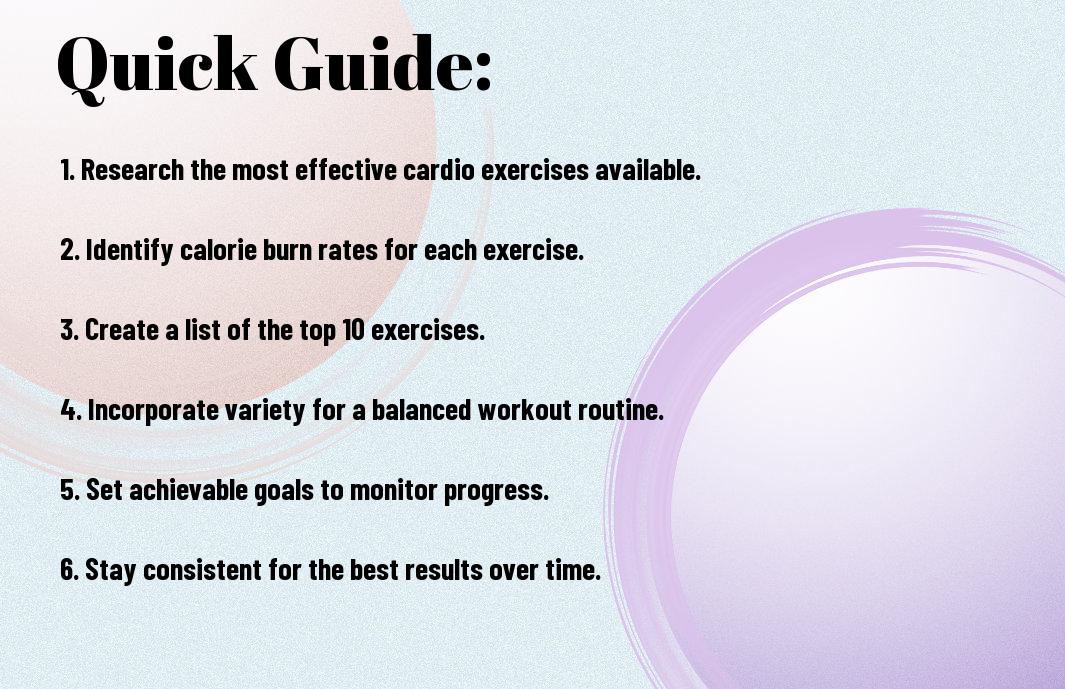
Types of Cardio Exercises
For individuals looking to enhance their fitness routine, understanding different types of cardio exercises is vital. Here are some popular categories:
- High-Intensity Interval Training (HIIT)
- Steady-State Cardio
- Circuit Training
- Dance-Based Workouts
- Low-Impact Cardio
Knowing the variety allows you to choose the best options for your fitness goals.
| Type | Description |
| HIIT | High-intensity bursts followed by short rest periods. |
| Steady-State | Maintaining a consistent effort over a longer duration. |
| Circuit Training | Combines cardio and strength exercises in a sequence. |
| Dance-Based | Fun workouts that blend movement with rhythm. |
| Low-Impact | Gentle exercises that reduce stress on joints. |
High-Intensity Interval Training (HIIT)
Interval training is a dynamic approach combining short bursts of intense exercise with periods of rest or lower-intensity activities. This method not only boosts your metabolism but also helps you burn a significant number of calories in a shorter time frame.
Steady-State Cardio
Now, steady-state cardio involves maintaining a consistent, moderate level of intensity throughout your workout. This is excellent for endurance building and can be very effective in long-duration activities (a key choice for sustained fitness).
For instance, activities like jogging, cycling, or swimming at a steady pace keep your heart rate elevated while enabling longer workout times. Ensuring you enjoy the activity can lead to better adherence to your routine (this retention helps in creating long-term fitness habits).
Circuit Training
The circuit training technique incorporates different exercise stations, often mixing strength and cardio. This method keeps your heart rate high while building strength and cardiovascular endurance (an excellent strategy for time-efficiency).
It allows you to engage multiple muscle groups and vary intensity levels throughout your session. Incorporating exercises you enjoy can enhance your motivation (finding joy in your workout can significantly enhance your results).
Dance-Based Workouts
HIIT workouts can include dance, offering a fun way to get your heart pumping. They often involve rhythmic movements and varied intensity, making your workout enjoyable and effective.
Dance-based workouts allow for creativity and self-expression while effectively burning calories. Experimenting with different styles, from Zumba to hip-hop, can keep your routine fresh and exciting (staying engaged is vital for consistent progress).
Tips for Maximizing Calorie Burn
Keep these strategies in mind to elevate your cardio workout efficiency:
- Incorporate interval training into your routine.
- Opt for high-intensity workouts several times a week.
- Engage in strength training to boost metabolism.
- Stay hydrated for optimal performance.
Thou can achieve better results by being consistent and gradually increasing workout intensity.
Incorporating Variety
With diverse exercises in your routine, you not only stave off boredom but also challenge your body effectively. Switching between activities such as running, cycling, and swimming keeps your muscles engaged and helps prevent plateaus.
Monitoring Heart Rate
Some workouts require careful attention to your heart rate to ensure you’re exercising in the fat-burning zone. (Investing in a heart rate monitor can be beneficial for tracking your progress.)
Monitoring your heart rate during exercise lets you gauge intensity, ensuring you achieve optimal calorie burn. Be aware of your target heart rate to maximize the effectiveness of your workouts and adjust as needed. (Setting clear heart rate goals can enhance your training outcome.)
Fueling Your Body Properly
Calorie intake should align with your exercise regimen for optimal results. Consuming the right nutrients before and after workouts aids recovery while fueling energy levels.
To support your cardio goals, focus on a balanced diet rich in whole grains, lean proteins, and healthy fats. This will provide the energy you need for your workouts while promoting muscle recovery and growth. (Prioritizing nutrition can significantly impact your workout results.)
Step-by-Step Guide to Top Cardio Exercises
Not all cardio exercises are created equal when it comes to calorie burning. Focus on the ones that offer the best results while keeping your enjoyment level high. Below is a simple guide to help you understand how to perform some of the most effective cardio exercises.
| Cardio Exercise | Steps to Perform |
| Running | Warm up, start at a comfortable pace, gradually increase speed, maintain form, cool down. |
| Cycling | Adjust bike to fit, start pedaling, maintain a steady pace, increase resistance, cool down. |
| Rowing | Set up seat and footrests, initiate stroke, use your legs and core, maintain rhythm, cool down. |
| Jumping Rope | Hold the rope handles, start with small jumps, maintain a steady rhythm, cool down. |
Running
You can burn a significant amount of calories by running regularly. Start at a pace that feels comfortable and gradually increase your speed and distance. (Customize your running route to keep things interesting and maintain motivation.)
Cycling
One of the best low-impact cardio options, cycling can also effectively torch calories. Whether you prefer outdoor cycling or stationary bikes, make sure to challenge yourself with different terrains or resistance levels. (Make a plan to switch up your cycling routine to keep progressing.)
A balanced cycling routine can set you up for success, combining endurance with speed work. Try interval training to maximize your calorie burn and amp up your fitness level. (Setting realistic cycling goals can lead to sustainable results.)
Rowing
StepbyStep into a full-body workout with rowing, which targets multiple muscle groups while elevating your heart rate. Focus on your technique for maximum efficiency and calorie burning. (Consider including rowing as a cross-training option in your routine.)
Rowing provides excellent cardiovascular benefits while building strength. Work on your stroke technique and rhythm to enhance your overall performance. (Regularly tracking your progress can keep you motivated and focused.)
Jumping Rope
Rope jumping is a fun and effective way to improve your cardiovascular fitness. Start with short intervals, gradually increasing duration as you gain strength and endurance. (Incorporate jumps into your workout regimen for a versatile cardio option.)
With a jump rope, you can enjoy an intense workout practically anywhere. Use various jumping techniques to keep it exciting and continuously challenge yourself. (Adding jumps to your warm-up can set a positive tone for your workout.)
Factors Affecting Caloric Burn
All cardio exercises may not have the same caloric burn due to various factors, including:
- Your body weight
- Your age
- Your fitness level
- The environment (e.g., temperature and altitude)
- The type of exercise you choose
The understanding of these elements can help you maximize your calorie-burning potential.
Individual Metabolism
An individual’s metabolism plays a significant role in caloric burn. (Understanding your metabolic rate can guide your exercise choices.) People with a faster metabolism burn more calories at rest and during physical activity.
Workout Duration and Intensity
With both workout duration and intensity, longer and more vigorous exercise sessions generally yield higher calorie expenditures. Balancing these two factors can be key to optimizing your workout results.
Another important aspect to consider is how you can gradually increase the duration and intensity of your workouts to continuously challenge your body and enhance your caloric burn. This approach ensures that your body adapts positively over time.
Body Composition
On average, individuals with more muscle mass tend to burn more calories during exercise because muscle tissue requires more energy than fat tissue. (Evaluating your body composition can be necessary for optimizing your workouts.) Understanding your own body composition allows you to tailor your cardio exercises to suit your personal fitness goals.
To further improve your caloric burn, consider incorporating strength training into your routine alongside cardio to enhance muscle mass. This combination can lead to an increased overall metabolic rate, improving your ability to burn calories even while at rest. (Evaluate how strength training fits into your overall fitness strategy.)
Pros and Cons of Different Cardio Exercises
To help you choose the best cardio exercise for your fitness goals, here’s a breakdown of the pros and cons associated with various popular options.
| Exercise | Pros | Cons |
| Running | High calorie burn, great for endurance | High impact, may lead to injuries |
| Cycling | Low impact, good for leg strength | Limited upper body engagement |
| Swimming | Full body workout, low impact | Requires access to a pool |
| HIIT | Efficient calorie burn, time-saving | High intensity may not suit all |
| Jump Rope | Portable, great for coordination | Can be hard on joints |
| Rowing | Low impact, engages multiple muscle groups | Requires rowing machine |
| Elliptical | Low impact, good for beginners | Less calorie burn compared to running |
| Dancing | Fun, social activity | Less structured workout |
| Stair Climbing | Great for leg endurance, high burn | May exacerbate knee problems |
| Kickboxing | Full body workout, stress relief | Learning curve for technique |
Benefits of HIIT vs. Steady-State
Clearly, both HIIT and steady-state cardio offer unique advantages for your workout routine. HIIT can significantly elevate your calorie burn in a shorter time frame, while steady-state cardio provides consistency and endurance building. (Determine which style aligns with your overall fitness goals before committing.)
Equipment vs. No Equipment
SteadyState exercises often require specific equipment, while many effective cardio options don’t need anything other than your body. This flexibility allows you to adapt your routine based on your resources. You can achieve an intense workout, whether you’re at home, at the gym, or outdoors.
Indoor vs. Outdoor Workouts
You have the option to do cardio indoors or outdoors, each offering distinct benefits. Indoor workouts provide controlled environments, while outdoor exercise can enhance your mood and exposure to fresh air. (Consider your schedule and preferences when choosing between indoor and outdoor workouts.)
Workouts done outdoors often provide more natural variability, like terrain and weather changes, which can make exercise more engaging. An outdoor setting can boost your motivation through scenery and open space, forging a diverse routine. (Ultimately, assess your comfort with conditions when selecting your workout environment.)
Frequently Asked Questions
Unlike many misconceptions, the effectiveness of cardio workouts can vary significantly based on individual preferences and lifestyles. It’s important to understand the nuances of your body and how it responds to different types of cardio to determine the best fit for you.
How often should I do cardio?
If you are looking to improve your cardiovascular fitness and burn calories, aim for at least 150 minutes of moderate-intensity cardio each week, or 75 minutes of high-intensity activity (this can be adjusted based on your personal fitness level and goals). You may also consider splitting your cardio sessions into smaller sections throughout the week for better consistency.
What is the best time of day for cardio?
For many people, the best time for cardio is whenever you can consistently fit it into your schedule (consider your personal energy levels and lifestyle when making this decision). It may not necessarily be about the specific time; rather, consistency and commitment are key factors to achieving your fitness goals.
It’s also worth noting that some find their performance peaks in the morning, fueled by overnight fasting, while others excel in the afternoon or evening when their body is fully awake. This is highly individual, so you might want to experiment with different times to determine when you feel most energized and can push yourself effectively. (Finding your optimal time can lead to better workout quality and results.)
Summing up
Ultimately, incorporating the top 10 cardio exercises that burn the most calories into your fitness routine can significantly enhance your workout effectiveness. By selecting from a variety of high-calorie-burning options, such as running, cycling, and HIIT, you can tailor your exercise regimen to meet your personal goals. These activities not only promote fat loss but also improve cardiovascular health, providing you with a comprehensive fitness solution. Prioritize consistency and intensity, and you’ll be well on your way to achieving your desired results.
Q: What are the top cardio exercises that burn the most calories?
A: The top cardio exercises that burn the most calories include running, cycling, swimming, rowing, jumping rope, high-intensity interval training (HIIT), stair climbing, kickboxing, dancing, and circuit training. Each of these activities can provide an intense workout that boosts your heart rate and promotes significant calorie loss, depending on the duration and intensity of the exercise.
Q: How does the intensity of cardio exercises affect calorie burning?
A: The intensity of cardio exercises plays a significant role in the number of calories burned during a workout. Higher intensity workouts, like sprinting or HIIT, typically burn more calories in a shorter amount of time compared to moderate activities like brisk walking or light cycling. This increased calorie burn occurs because the body has to work harder, elevating your heart rate and energy expenditure during and after the exercise.
Q: Can I burn more calories with cardio exercises by combining them with strength training?
A: Yes, combining cardio exercises with strength training can enhance calorie burning. While cardio focuses on elevating your heart rate, strength training helps build muscle mass, which can increase your resting metabolic rate. This combination allows for more calories to be burned both during workouts and in the recovery phase post-exercise, making your fitness routine more effective for weight management and overall health.

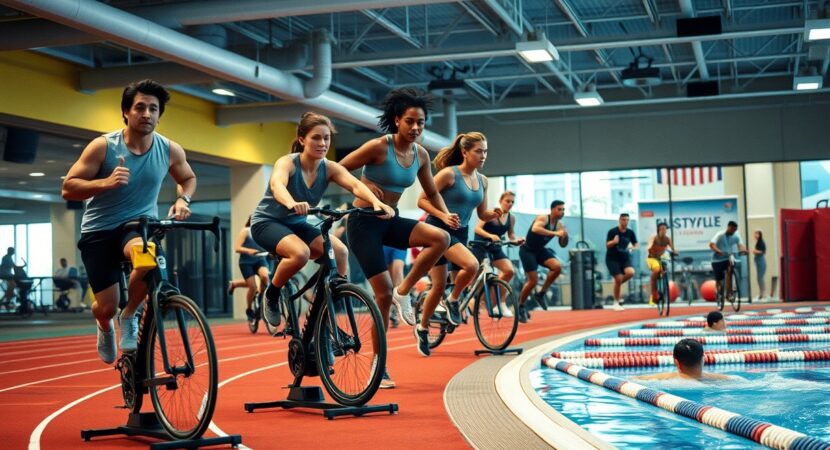




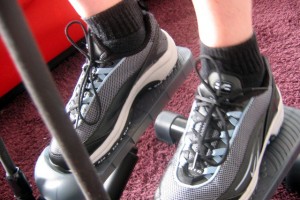

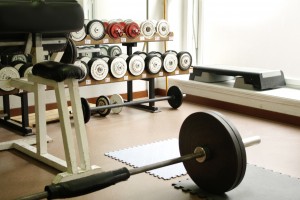
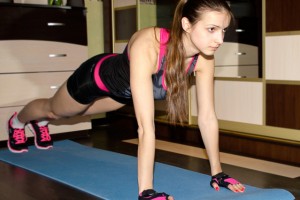
Reply